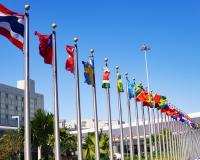
Vibrant Environment
Climate Change And Sustainability
All | Biodiversity | Climate Change and Sustainability | Environmental Justice | Governance and Rule of Law | Land Use and Natural Resources | Oceans and Coasts | Pollution Control

In these early days of the Biden Administration, it has become clear that climate diplomacy is returning to the U.S. foreign policy agenda. On Inauguration Day, the new Administration announced that the United States would rejoin the Paris Agreement, signaling an abrupt shift from the previous administration’s approach toward multilateral environmental agreements. Signed in 2015, the Paris Agreement made history as the first legally binding agreement to oblige states to limit global warming to well-below 2°C by the end of the century. Limiting warming to this threshold would help prevent irreversible damage to our climate system and planetary boundaries, as demonstrated by the Intergovernmental Panel on Climate Change. To accomplish this ambitious feat, signatories of the agreement are asked to submit Nationally Determined Contributions (NDCs) every five years to communicate how countries will reduce their emissions and build resilience to adapt to a warming world.

“The future has arrived—it’s just not evenly distributed yet,” observed writer William Gibson, whose observation was cited during the Environmental Law Institute’s November 17 webinar, “Digital Solutions to Climate and Water Challenges,” the first in a series that will serve to continue exploring the dynamic intersection of policy and cutting-edge technologies begun in 2019 with ELI’s inaugural GreenTech conference in Seattle.
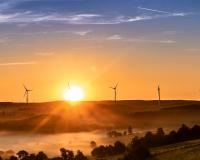
As we are moving from an aggressively deregulatory period to one in which regulation is more likely to be seen as important in advancing environmental policy, let’s take a quick look at what to anticipate from the three branches of the federal government.

Part 1 of this blog presented the environmental and social impacts of the fashion industry, and argued for structural changes to address sustainability beyond greenwashing. Part 2 presents potential paths toward sustainability in the fashion industry.

The fashion industry is thirsty. Every year, it consumes 93 billion cubic meters of water—enough for the survival of over 5 million people. The problems within the fashion industry go beyond water use. Due to the rise in fast fashion, global clothing production has exponentially increased, doubling between 2000 and 2014. Fashion is now the second-most polluting industry worldwide.
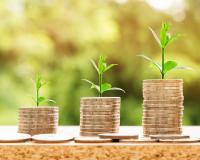
Environmental Protection Agency chief Andrew Wheeler proudly details the administration’s deregulatory record in a Newsweek opinion article published in late July. He frames his success story within President Trump’s January 2017 executive order requiring agencies to eliminate two regulations for each new one. While Wheeler touts the avoided costs, he doesn’t mention the avoided benefits the repealed rules would have provided.
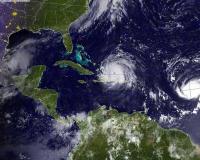
The National Oceanic and Atmospheric Administration (NOAA) reported in August that this year’s Gulf of Mexico dead zone was unexpectedly small—in fact, the third-smallest ever measure in the 34-year record. Interestingly, this comes just two months after NOAA had forecasted a larger-than-average dead zone in early June. The cause of this shift appears to be Hurricane Hanna, whose large, powerful waves agitated the water column, disrupting algal accumulation in the Gulf.
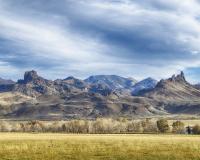
Almost one-quarter of all U.S. CO2 emissions come from fossil fuels extracted from public lands. Producing more than 274 million barrels of oil, 3.3 billion cubic feet of natural gas, and 302 million tons of coal each year, BLM’s management decisions have a significant impact on climate change. In this month’s issue of ELR—The Environmental Law Reporter, authors Jamie Gibbs Pleune, John Ruple, and Nada Wolff Culver argue that the Bureau has not only the authority, but a legal duty to mitigate climate change in its permitting decisions. Using existing legal structures, they provide a road map for requiring all new BLM oil and gas development to achieve net-zero emissions.
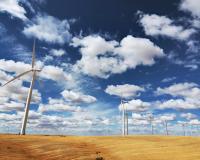
We have the solutions we need to build an equitable and just climate resilient future. Over the past year, coalitions of frontline environmental groups, labor organizations, tribal groups, and other mission-driven organizations in the United States have developed and published comprehensive policy platforms to address the climate crisis. These platforms outline federal, local, and state policy for building resilience and transitioning to renewable and regenerative economies.

With the sweeping and difficult changes brought on by the COVID-19 pandemic, including social distancing and an economic downturn with record-high unemployment, greenhouse gas (GHG) emissions have plummeted globally. Reductions in emissions for the year are projected to be between 4% and 7% globally and between 6.7% and 11% in the United States.